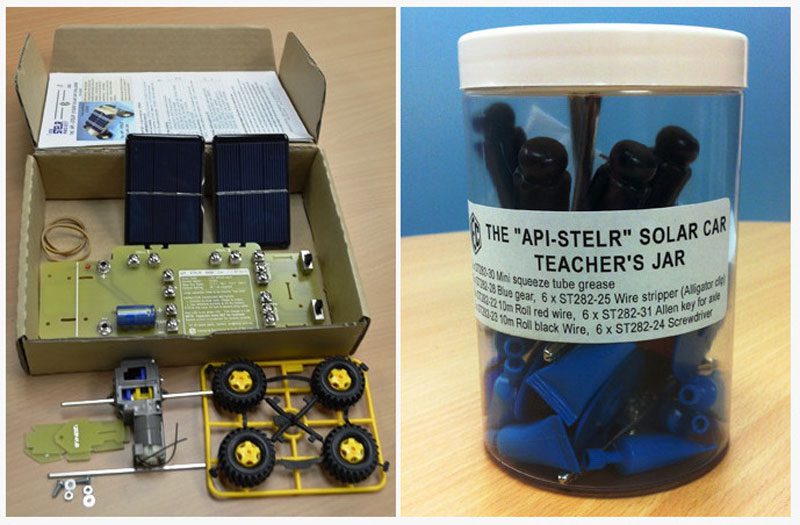It’s on again – the 2020 STELR Solar Car Challenge will ask students to design the fastest, or most efficient, or most powerful electric car powered by the sun.
The Solar Car Challenge, which is being launched by The Academy of Technology and Engineering (ATSE) and the Australian Power Institute (API), is inviting schools from all regions of Australia to participate.
The project is supported by one of more than 20 STELR (Science and Technology Education Leveraging Relevance) teaching modules, and is expected to test the limits of students’ knowledge of solar energy and electric circuits, bolstering STEM skills and experience as they work with renewable energy concepts to design and build efficient solutions for solar cars.
While the car kits that will be provided for the challenge are not quite on the scale of the Bridgestone World Solar Racing Challenge which sees teams pitted against each other in a “race” from Adelaide to Darwin every two years, students are encouraged to create their own in-school challenges with the vehicles.

There is a catch though – each kit, which includes a 14-car kit for students and a “spare parts jar” for teachers (who are also provided with a curriculum), costs $A1,320. Additional car kits cost $100 and a spare parts jar costs $65.
To ensure that less advantaged schools do not miss out on the chance to participate in the challenge and gain valuable STEM skills, API is sponsoring 14 solar car kits.
“The API and our 19 members from across the Australian power sector are passionate about inspiring the next generation of Australia’s STEM workforce – we know first-hand how important STEM skills will be in supporting our industries and communities in the future,” API CEO Dr David Pointing said in a statement.
“The power sector in particular is going to need creative, collaborative and capable young people to help us design, build, operate and maintain our energy systems, and we recognise that it is vital to reach and inspire students early on in their educational journeys.
“The Solar Car Challenge is a fantastic opportunity to connect with students and demonstrate how practical applications of STEM skills, such as solar energy systems, can lead into fun, challenging, and rewarding opportunities and careers.
“The challenges range from working with innovative technologies to developing solutions focused on community needs and working in diverse teams of people,” he said.
ATSE CEO Kylie Walker said in a statement she is thrilled that this will allow more schools to participate.
“We’re keen to hear expressions of interest from remote, regional and under-served schools to receive a solar car kit, so that students can have fun with technology and engineering and learn about one of Australia’s most popular renewable energy sources,” she said.
Winning designs will be showcased with the Academy’s national network of leading engineers and technologists,

Bridie Schmidt is associate editor for The Driven, sister site of Renew Economy. She has been writing about electric vehicles since 2018, and has a keen interest in the role that zero-emissions transport has to play in sustainability. She has participated in podcasts such as Download This Show with Marc Fennell and Shirtloads of Science with Karl Kruszelnicki and is co-organiser of the Northern Rivers Electric Vehicle Forum. Bridie also owns a Tesla Model Y and has it available for hire on evee.com.au.

